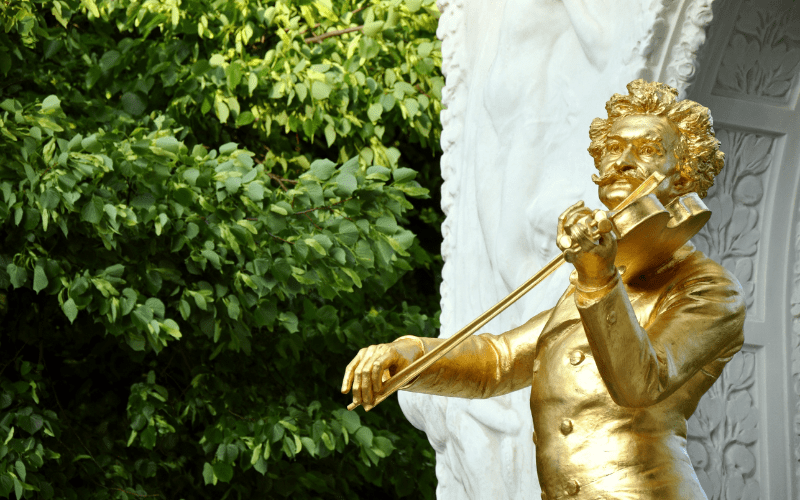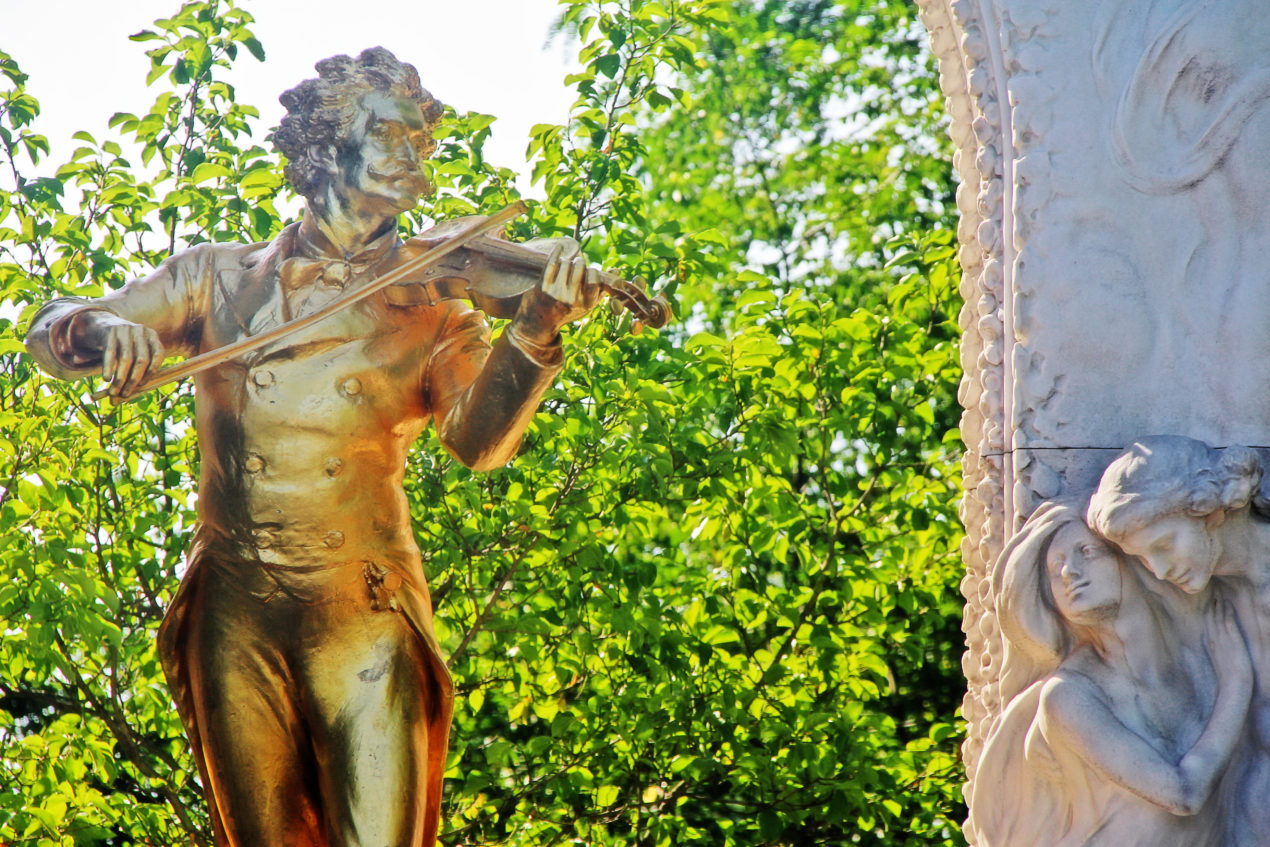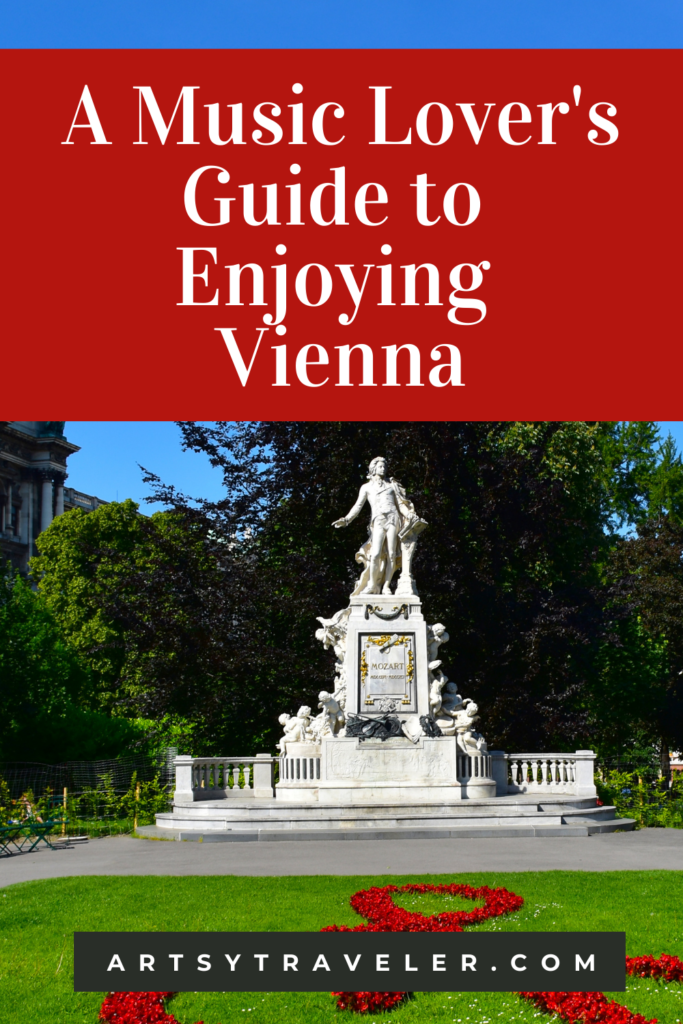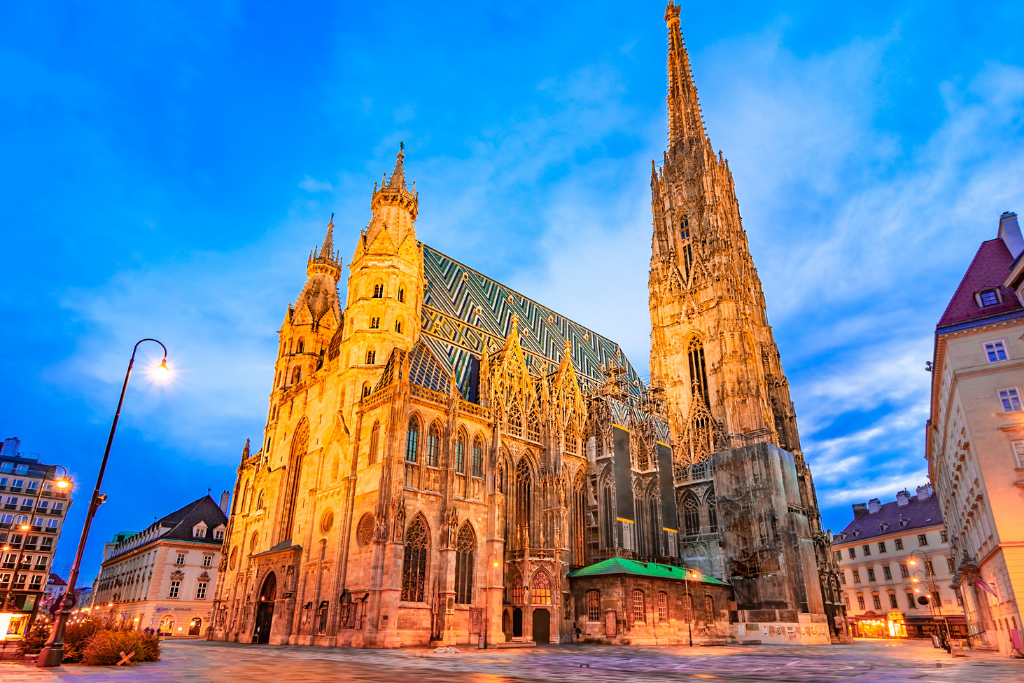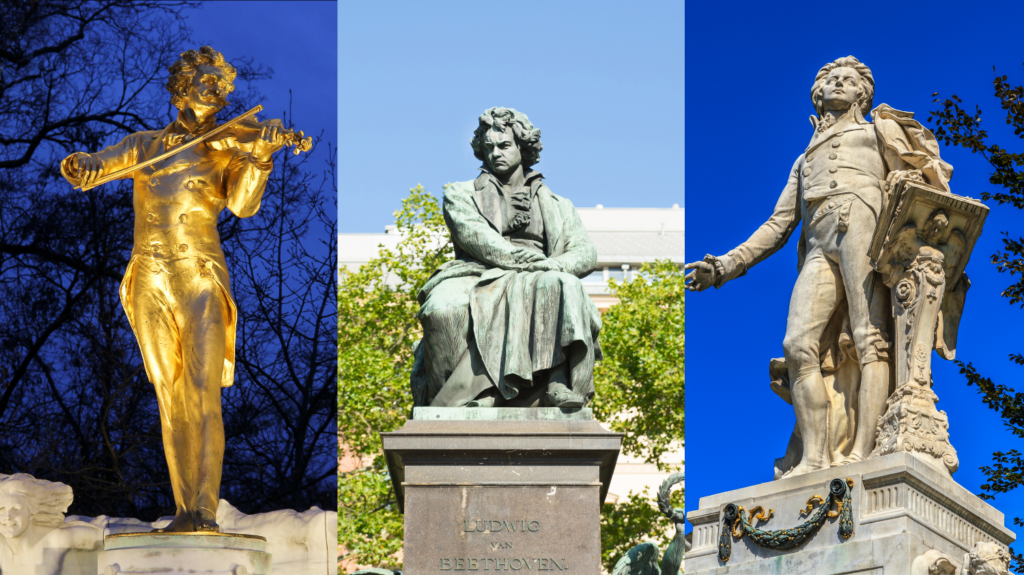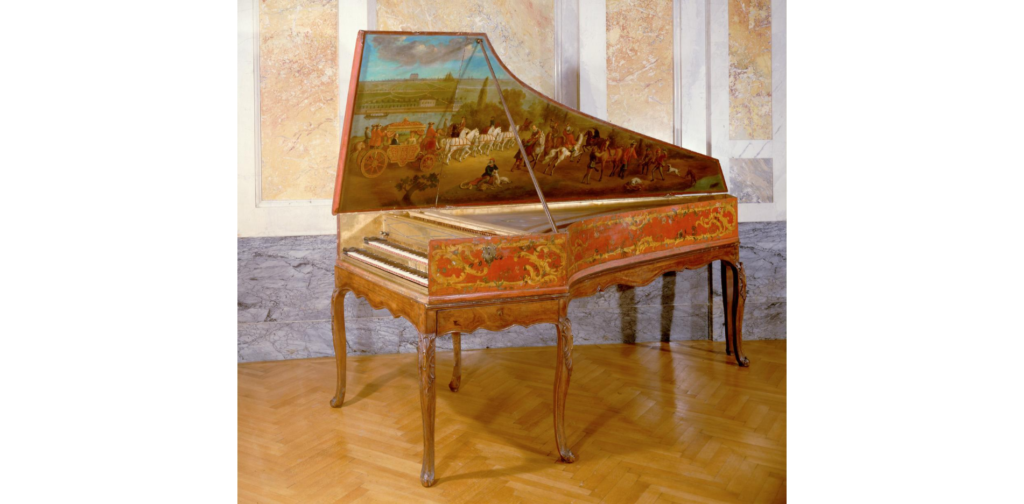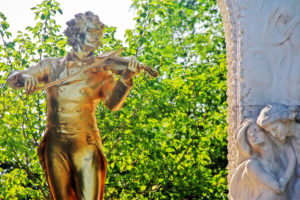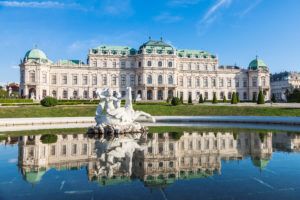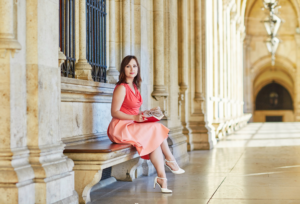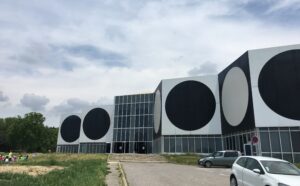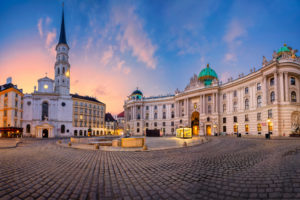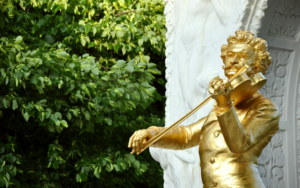Visit Vienna & Salzburg: Best Tips for Artsy Sightseeing Options
Visit Vienna and Salzburg to enjoy some of Europe’s quintessentially artsy travel opportunities. Concerts, world-class museums, and incredible art await. If you’re a classical music fan (Mozart, Beethoven, Strauss, oh my!), you’ll be in 7th heaven.
Find out why I recommend travel to Vienna and Salzburg in this post!
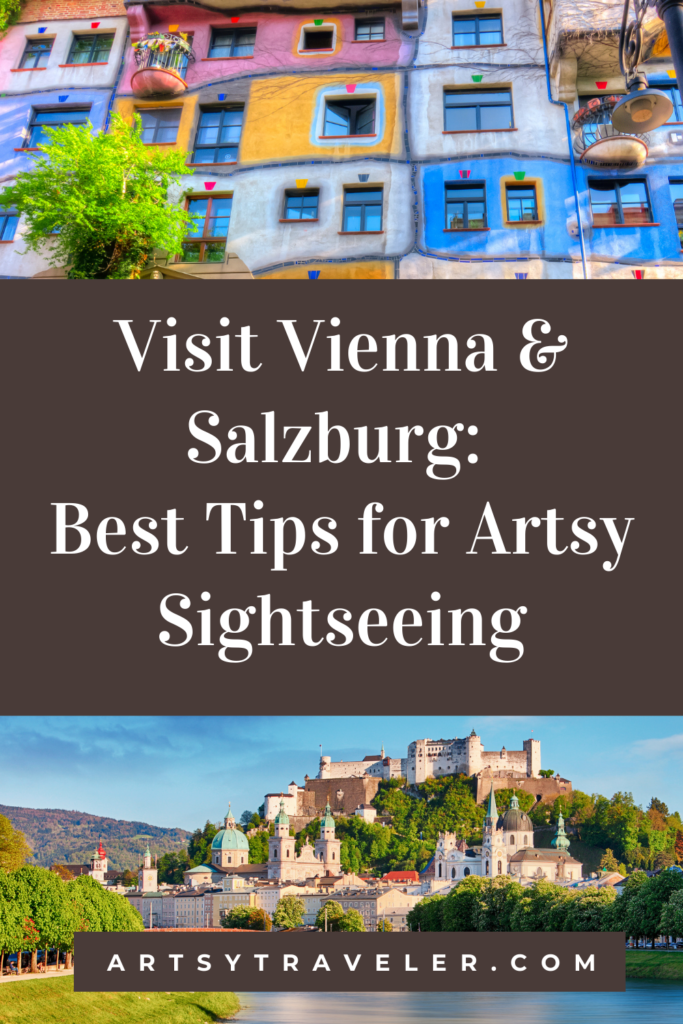
I first visited Austria on a skiing holiday in 1975 and fondly remember the friendliness of the people and the gorgeous Tyrolean scenery in the ski resort town of Sölden. Since then, I’ve spent most of my Austria sightseeing time in Salzburg and Vienna (my particular favorite). In fact, my second novel A Woman of Note about a female composer in the 1830s is set in Vienna.
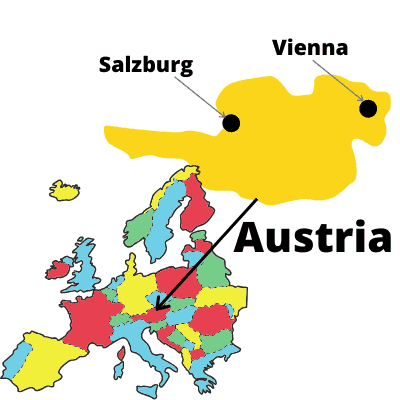
Artsy Sightseeing in Salzburg
When I first visited Salzburg with my family, I drove them crazy (short drive) with my constant references to my favorite musical of all time–The Sound of Music.
Yes, I know. It’s sentimental and over-the-top, but I loved it when I first saw it in the theater as a child and I still watch it every few Christmases. Those songs just don’t get old.
I threatened to embarrass my family by breaking into song at strategic locations.
To their relief, I never did, but I was rather surprised to discover that The Sound of Music was not always popular in Salzburg. On my first visit in 1999, I could find only a small pamphlet about the movie in the gift shop at the castle (AKA the Hohensalzburg Fortress shown below–one of Salzburg’s major attractions).
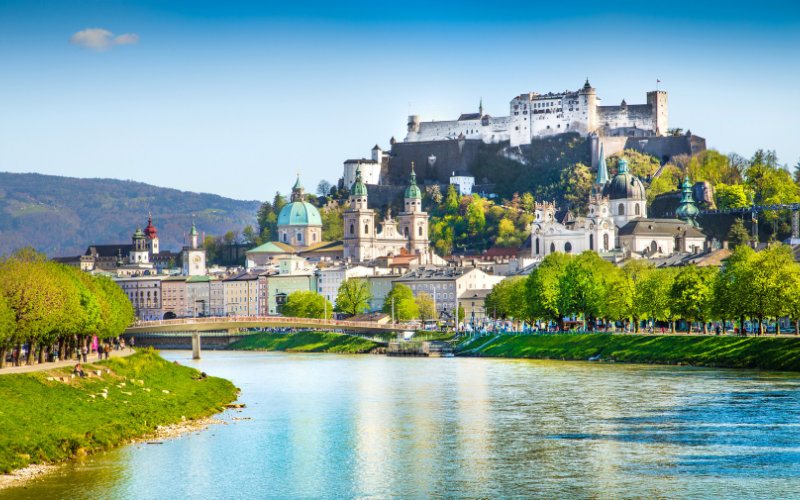
All that has changed. You can find information about shooting locations on the official Salzburg website and you can take Sound of Music tours. According to the website, more than 300,000 fans visit Salzburg every year to walk in the footsteps of the von Trapp family in the original shooting locations.
Touring Salzburg
We loved wandering around Salzburg. It’s a stunningly beautiful small city dominated by the Hohensalzburg Fortress. Apparently, the fortress is the largest preserved castle in central Europe and has become the symbol of Salzburg as the City of Mozart.
You can visit the Fortress year round. Tour the Fortress Museum to view historical exhibits about courtly life, the Marionette Museum, and the Altes Zeughaus which has interactive displays focused on the development of cannons, armaments and firearms (not really artsy, but interesting nonetheless!).
Part of the fun of a visit to Salzburg is riding the funicular from the Festungsgasse. Admission is included with the Salzburg card. Go early to beat the crowds (always good advice with popular tourist attractions in Europe).
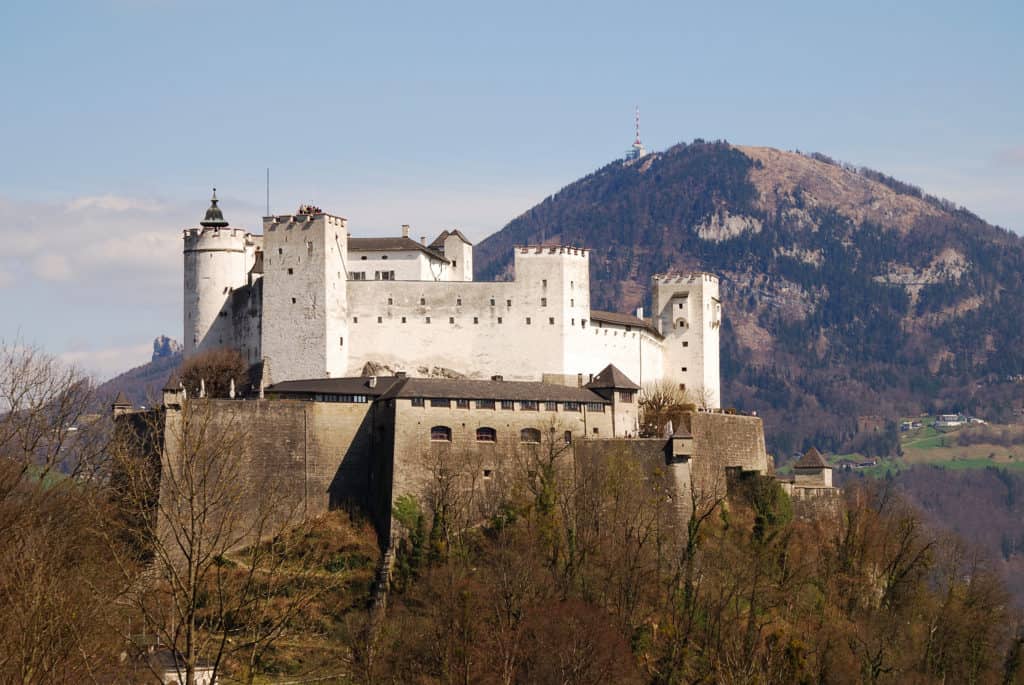
Mozart in Salzburg
One big reason people visit Salzburg is to worship at the feet of Mozart who was born there in 1756.
If you’re visiting Salzburg, you can’t help but notice its love affair with its most famous son, Wolfgang Amadeus Mozart. He was born in Salzburg on January 27, 1756 and died on December 5, 1791 in Vienna at the age of 35. Mozart wrote over 600 works, including symphonies, concertos, chamber music, operas, and choral music. Ask anyone to name a great composer and chances are if they don’t say Beethoven or Bach, they’ll say Mozart.
Salzburg styles itself as the City of Mozart. If you like Mozart-themed chocolates and other souvenirs, you’ve come to the right place (you’ll also find them in Vienna!).
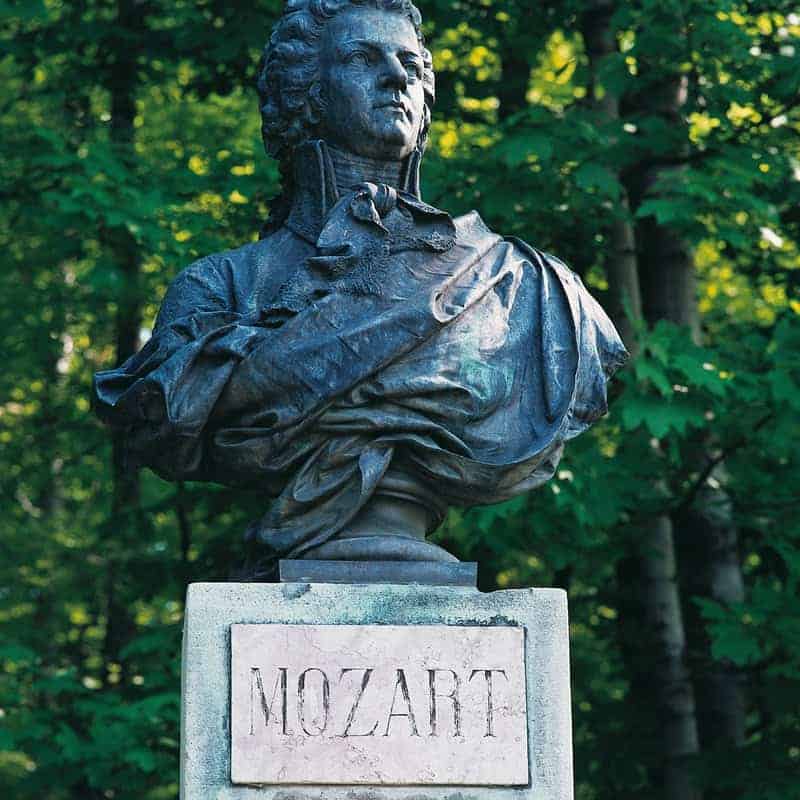
The big Mozart attraction is Mozart’s House at No. 9 Getreidegasse in the heart of Salzburg’s old city. Tour the house to see items of everyday life from the period, memorabilia that documents Mozart’s life in Salzburg, and several historical instruments.
To get the lay of the land quickly, consider signing up for the City Center Bus Tour and Mozart’s House. The tour also includes visits to filming locations for The Sound of Music. Here are some other tours to consider.
Concert-Going in Austria
For me, attending concerts in Austria has two benefits.
First, I get to hear awesome music played by local orchestras, often in the concert halls where the music was first performed. I get goosebumps listening to a concert of Mozart’s work just steps from the house in which he was born.
Second, concerts that are part of local festivals are generally tourist-free. Plenty of tourists attend the special Strauss/Mozart concerts put on for the bus tour groups. These tourist concerts are great, don’t get me wrong. But if you want to be one of the few people in the audience who isn’t a local, check out the many musical festivals and concerts that attract a primarily Austrian crowd.
On the other hand, this strategy can backfire if you don’t do as the Austrians do. Let me explain!
A Tourist Faux Pas at a Concert in Salzburg
One year, we snagged tickets to a concert at the International Mozarteum Foundation building (Internationale Stiftung Mozarteum) in Salzburg. The concert was called Sturm und Drang (Storm and Struggle) and featured piano pieces by Liszt. Anticipating a fiery afternoon of pyrotechnic piano playing, we happily entered the ornate concert room and took our seats.
Within minutes, we became acutely aware that we stood out like stupid-tourist sore thumbs. Although the day was searingly hot, every single person in the audience wore formal dress. The men were decked out either in tuxedos complete with cummerbunds or in full dress uniforms, medals sparkling. The women shimmered in long evening dresses and dripped with pearls and diamonds as they swished into their seats.
Gregg wore ratty, paint-daubed shorts and a T-shirt, Julia wore pink shorts and a grubby T-shirt (hey, we were on holiday–who does laundry?), and I wore my decidedly hippy-dippy, no-crease travel dress. We looked like country bumpkins.
We also seriously miscalculated the appeal of the program. The music was by Liszt all right, but most of the program consisted of delicate, gossamer settings of Schubert’s lieder. The music was beautiful, no doubt about it, but it was also really, really, really slow. After fifteen minutes of trying desparately to look entranced, I wanted nothing more than to curl into a ball under my chair and snooze away the afternoon hidden from the disapproving gaze of all those well-dressed Austrians. And as for twelve-year-old Julia, who, despite our best efforts at the time, was not much of a classical music fan, sitting still in the oppressive heat was agony.
We left at the interval.
That said, don’t let our experience put you off investigating concerts while you’re traveling, especially in Austria where music concerts are as common as lunch.
Staying in Salzburg
Salzburg is not a large town, but save your legs and stay somewhere in the old town center so you can walk to all the attractions. You’ll pay more, but the convenience will be worth the extra euros. Check the map below for some options.
Booking.comArtsy Sightseeing in Vienna
Vienna is one of Europe’s loveliest cities. It’s small enough to be easily walkable, at least in the charming city center. And there’s a lot to see, particularly if you enjoy art and music.
Vienna has been ranked by consulting firm Mercer as the most livable city in the world for ten years running.
Quick side note: My home town of Vancouver, Canada was recently ranked number 3 in the same survey. I think we have Vienna beat for scenery and recreation, but Vienna is head and shoulders above Vancouver when it comes to world-class museums and cultural events. And Vienna’s laid-back ambience, historic coffee houses and slabs of sachertorte are also features that Vancouver can’t compete with.
Getting Around Vienna
In Vienna, consider purchasing a Vienna City Card & Airport Transfer ticket before you leave home. I pre-purchased my transportation tickets and was very glad I did because I never did figure out how to pay for the trams. Fortunately, I had my city card so if I was stopped (I never was), I was legit.
A smooth train whisks you from the airport to the center of Vienna in just 16 minutes. You can then catch public transit from the U. Look for the blue U signs at the entrances to the subway stations.
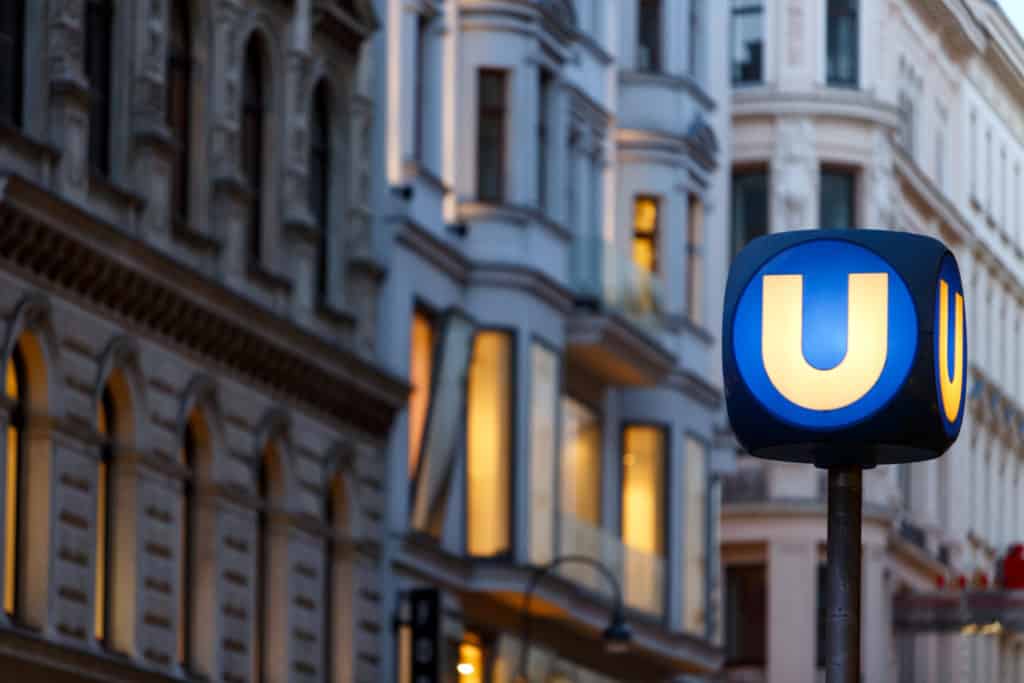
On both my trips to Vienna, I spent a lot of time walking around the cobbled streets and people-watching. Stephansplatz in the center of Vienna is the perfect place to hang out and watch the action.
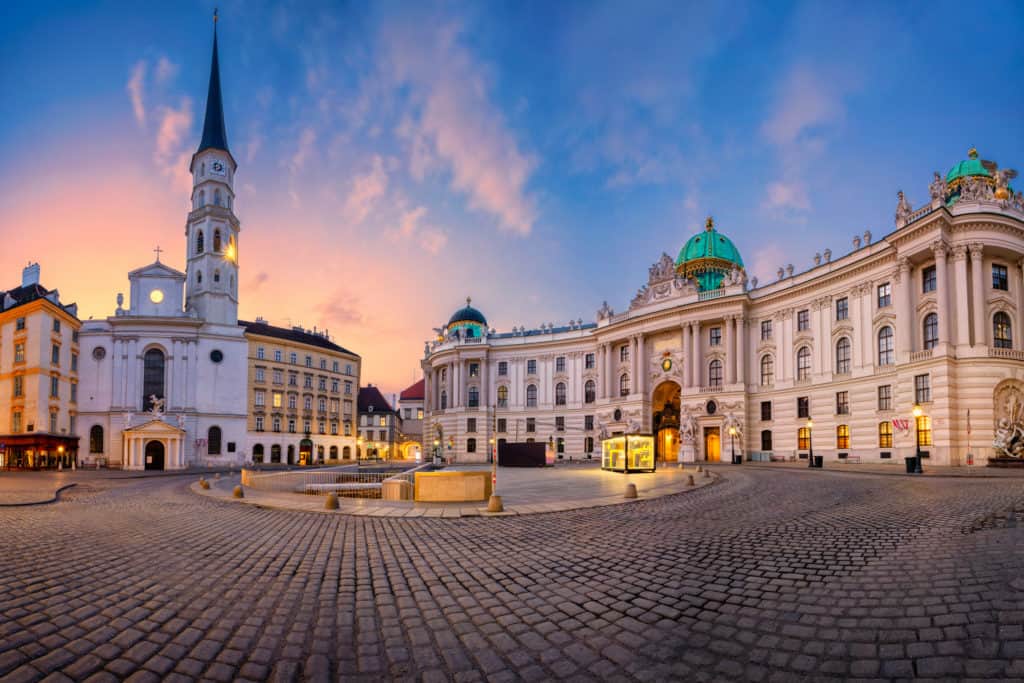
For an entertaining overview of my first day in Vienna as a solo traveler, check out Traveling to Vienna: The Waltz Begins.
Music is a major reason to visit Vienna. My Music Lover’s Guide to Vienna provides a great deal of information about enjoying music in Vienna. You’ll also find plenty of other arts-related sightseeing opportunities in Vienna.
Museums in Vienna
Vienna has an amazing number of first-rate museums. In fact, it has an entire Museum Quarter. If you are a museum-goer, you might not emerge for days.
Consider purchasing a Vienna PASS. You can use it to skip the line at popular attractions, get free admission to over 60 attractions including the Belvedere Palace and St. Stephen’s Cathedral, and ride the hop-on hop-off sightseeing bus. It’s a pretty good deal and saves you time.
A less expensive option is the Vienna Flexi PASS that allows you to customize your itinerary. I haven’t used either pass, but in my experience, such passes can be good value. Check exactly which attractions they offer to calculate if they’ll save you money.
Read my suggestions for touring Museums in Vienna.
Concerts in Vienna
Be sure to enjoy a concert or two while in Vienna. You can purchase tickets from Mozart-costumed touts in Stephansplatz for the tourist shows, or go online and find local concerts.
Also check the web for music festivals and concerts being presented during your time in Austria. Every time I’ve visited Austria, I’ve found a classical music festival–or two–to attend. You can also look for performances by the state opera, the Vienna Boys’ Choir, and the Vienna Philharmonic. If music is your thing, visit Vienna during the season–from about October to May.
Staying in Vienna
Vienna is an expensive city. Expect to pay €250-400 or more for a centrally located, good-quality hotel room in Vienna. When you’re looking for accommodation in Vienna, choose places within the old city walls.
You could opt for a budget hotel on the outskirts but I don’t recommend doing so. You’ll waste too much time commuting through dreary suburbs into the wonderful city center. Spend the money and book a good hotel in the old city.
I made the mistake of being budget conscious to a fault on one trip to Vienna when I booked an apartment about a 40-minute tram ride from the city center. Sure, the place was inexpensive, but the hot water ran out on the second day and it was located in a nondescript neighborhood, kilometers from the action.
For a giggle, read about that misadventure in Robbie Bubble, an excerpt from Pastel & Pen: Travels in Europe that I wrote and my husband Gregg illustrated.
Apartments can be a good bet in Vienna, but again, book one in the center of the city. You’ll find excellent ones listed on HomeAway and on Booking.com. Click on the map below to find places to stay in Vienna.
Booking.comOther Posts about Vienna & Austria
- Visiting Austria: Top Tips for an Artsy Trip
- Best Vienna Museum Experiences that Appeal to the Artsy Traveler
- A Music Lover’s Guide to Enjoying Vienna–The City of Music
Have you traveled to Vienna and Salzburg? Share your experiences and recommendations with other Artsy Travelers in the Comments below.
